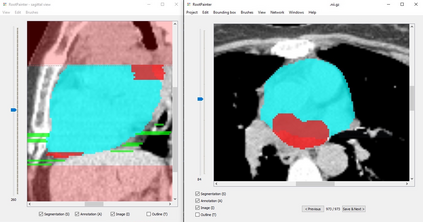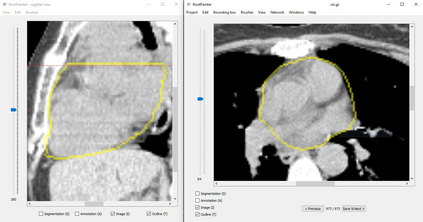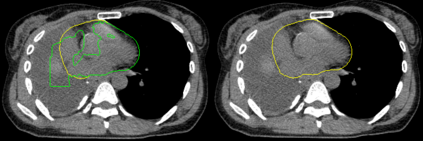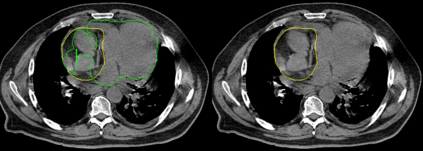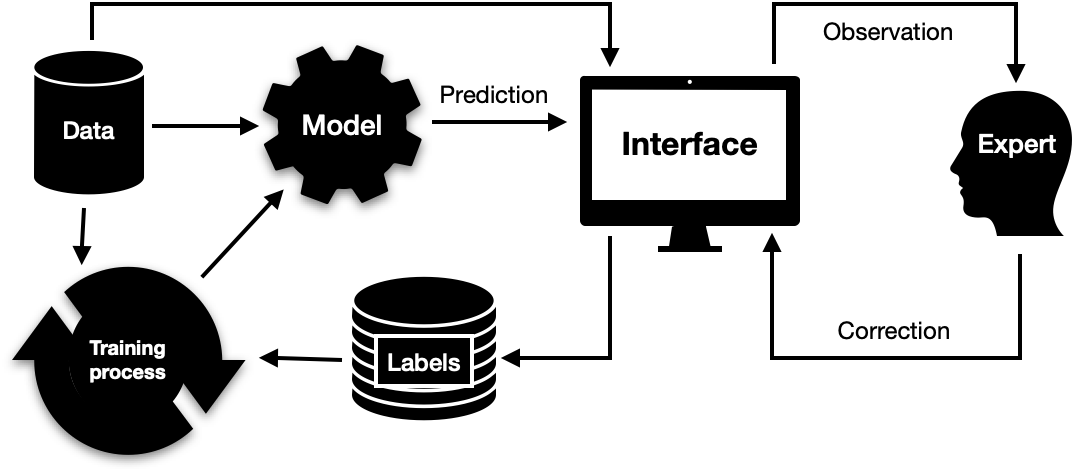Organ-at-risk contouring is still a bottleneck in radiotherapy, with many deep learning methods falling short of promised results when evaluated on clinical data. We investigate the accuracy and time-savings resulting from the use of an interactive-machine-learning method for an organ-at-risk contouring task. We compare the method to the Eclipse contouring software and find strong agreement with manual delineations, with a dice score of 0.95. The annotations created using corrective-annotation also take less time to create as more images are annotated, resulting in substantial time savings compared to manual methods, with hearts that take 2 minutes and 2 seconds to delineate on average, after 923 images have been delineated, compared to 7 minutes and 1 seconds when delineating manually. Our experiment demonstrates that interactive-machine-learning with corrective-annotation provides a fast and accessible way for non computer-scientists to train deep-learning models to segment their own structures of interest as part of routine clinical workflows. Source code is available at \href{https://github.com/Abe404/RootPainter3D}{this HTTPS URL}.
翻译:在对临床数据进行评估时,许多深层次的学习方法都未能达到所承诺的结果。我们调查了使用交互式机械学习方法进行器官与风险同流工作所产生的准确性和节省时间的情况。我们将这种方法与剪贴胶合软件进行比较,并找到与手动划界的强烈一致,其分数为0.95。 使用纠正性注释制作的说明也花费较少的时间来制作图像,因为更多的图像有附加说明,因此与人工方法相比节省了大量时间,而心脏平均需要2分2秒的时间,在923个图像被标定后,平均需要2分2分2秒的时间来划定,而手动脱线时则需要7分钟和1秒。我们的实验表明,交互式机械学习与矫正性注解为非计算机科学家提供了一个快速和方便的途径,以训练深层次学习模型,将自身感兴趣的结构分成日常临床工作流程的一部分。源代码可在以下https://github.com/Abe04/RoootPAinter3}。


